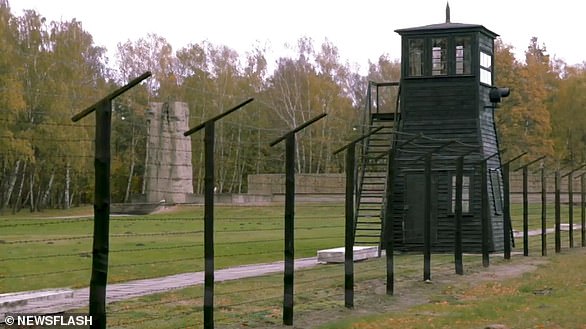A former Nazi death camp worker dubbed the ‘Secretary of Evil’ has died aged 99 in Germany two years after facing justice for aiding more than 10,000 murders.
Irmgard Furchner, who was a secretary to the SS commander of the infamous concentration camp Stutthof, died aged 99, German media report.
Her death on January 14 – which had not been reported until now – has been confirmed to outlet Spiegel by the local prosecutor.
This comes after she last year failed in her bid to overturn a conviction for being an accessory to over 10,000 murders at the concentration camp in north Poland during World War II.
Germany‘s Federal Court of Justice upheld the conviction given to Furchner in August last year.
An estimated 63-65,000 people, made up of Jewish people, political prisoners, accused criminals, gay people and Jehovah’s Witnesses, were slaughtered at the camp between 1939 and 1945.
She was accused of being part of the apparatus that helped the camp near Danzig, now the Polish city of Gdansk, function.
She was convicted of being an accessory to murder in 10,505 cases and an accessory to attempted murder in five cases.
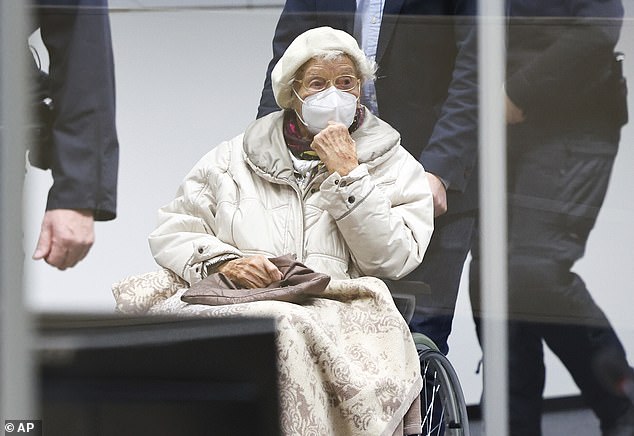
Germany’s Federal Court of Justice upheld the conviction given to Irmgard Furchner (pictured), who was a secretary to the SS commander of the infamous Stutthof concentration camp, last year
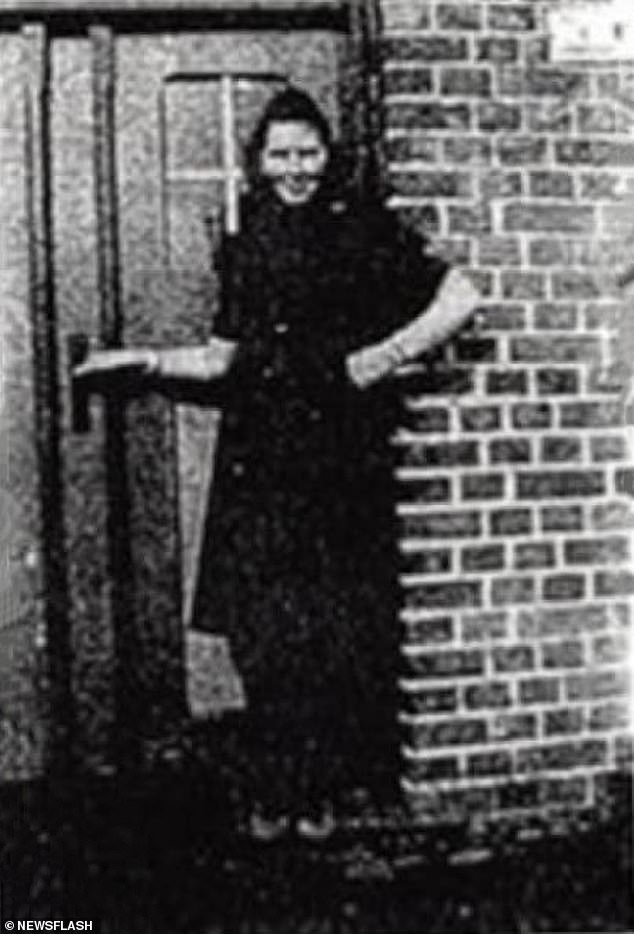
Furchner (pictured in 1944) was 18 and 19 when she worked as a secretary at the camp
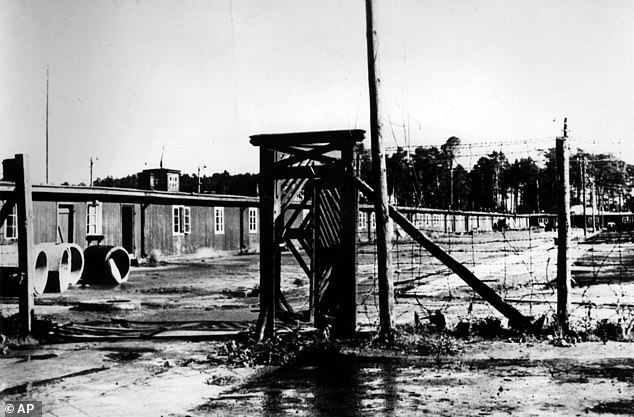
An estimated 63-65,000 people died in Stutthof during World War II
At a federal court hearing in Leipzig in July, the Nazi’s lawyers tried to cast doubt over whether she could really be considered an accessory to the atrocities committed at the camp, and whether she had been fully aware of what was going on.
She was tried in a juvenile court as she was 18 and 19 at the time of the alleged crimes, and the court couldn’t establish beyond a doubt her ‘maturity of mind’ then.
But the court ruled that Furchner ‘knew and, through her work as a stenographer in the commandant’s office of the Stutthof concentration camp from June 1, 1943, to April 1, 1945, deliberately supported the fact that 10,505 prisoners were cruelly killed’.
The killings were by gassings, by hostile conditions in the camp, by transportation to the Auschwitz death camp and by being sent on death marches at the end of the war.
In September 2021, she was detained for several days by Germany police after she tried running away at the start of her trial.
Furchner ran away from her care home in Norderstedt, northern Germany, and tried to take a taxi to the city’s railway station, but did not make it far.
She was held for five days, with the start of the trial being delayed thanks to her attempted escape.
During the trial, the court heard how SS men in white medical uniforms would pretend to be doctors who were simply measuring the height of prisoners.
But instead, the prisoner’s height was used as the setting for a specially engineered ‘neck shot’ device. Around 30 prisoners were then shot in the neck within a two-hour period.
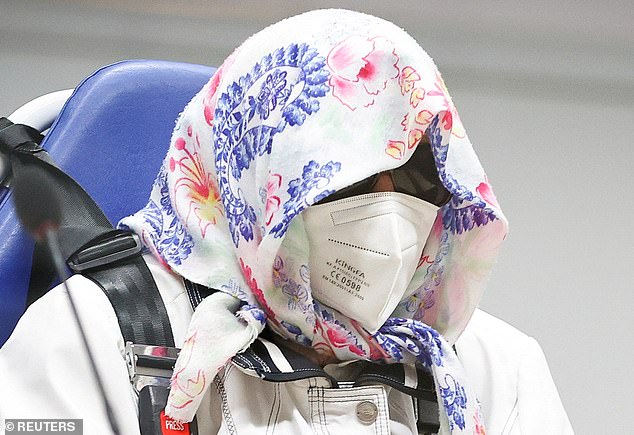
In September 2021, she was detained for several days by Germany police after she tried running away at the start of her trial
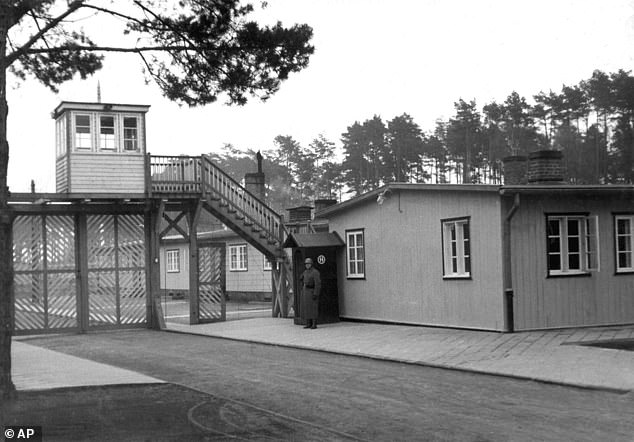
Furchner’s case may be one of the last Nazi war crime cases that ever get pushed through
In other cases, prisoners were forced into chambers that were filled with poisonous Zyklon B gas. Here prisoners screamed in agony, scratched at their skin until it was red raw, and even pulled their own hair out.
Furchner, born Irmgard Dirksen on May 19, 1925, worked as secretary for the concentration camp commandant Paul Werner Hoppe.
The prosecutor described how on July 22, 1944, SS Obersturmbahnführer Paul Maurer gave orders that a group of prisoners at Stutthof be transported to Auschwitz for extermination.
Four days later, a list of prisoners to be transferred was written at the commandant’s office at Stutthof. At 6.05pm, commandant Hoppe gave confirmation by radio that the transport was en route.
The prosecution then claimed that this message must have been written by Furchner.
During her trial, Furchner claimed that despite working in the camp’s command block, she knew nothing of its murderous regime.
But it was revealed during her trial that her husband – who was a Nazi SS soldier during World War II – testified in 1954 that he was aware that people had been gassed at the concentration camp.
While she reportedly remained silent through much of her trial, she said toward the end: ‘I’m sorry for everything that happened. I regret that I was in Stutthof at the time. I can’t say anything else.’
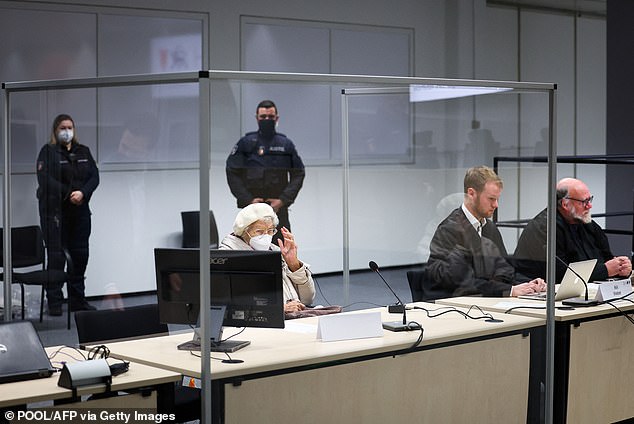
As the secretary to the SS commander of the infamous Stutthof concentration camp, Furchner (pictured during the trial in 2022) was convicted of being an accessory to over 10,000 murders
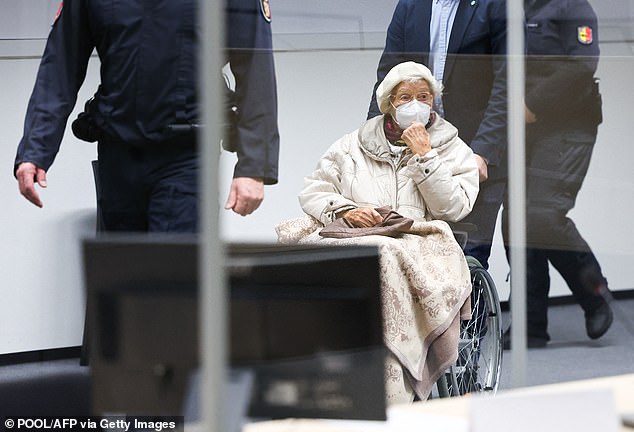
Pictured: Defendant Irmgard Furchner, a former secretary for the SS commander of the Stutthof concentration camp, is brought to a courtroom in Itzehoe, northern Germany, where her verdict was spoken on December 20, 2022
Reacting to Furchner’s apology, the Holocaust Educational Trust said that only survivors and relatives of the Nazi genocide could ‘truly judge’ her for her ‘long-delayed “apology”‘.
Manfred Goldberg, who survived eight months in the Stutthof camp as a slave worker, said at the time that Furchner’s two-year suspended sentence – which mean she did not serve time in prison – was a ‘mistake’ and is too lenient.
Mr Goldberg, 94, said: ‘This trial serves the purpose of letting the public know that there is no limitation of time for crimes of such cruelty or magnitude.
‘My only disappointment is that a two-year suspended appears to me to be a mistake. No one in their right mind would send a 97-year-old to prison, but the sentence should reflect the severity of the crimes.
‘If a shoplifter is sentenced to two years, how can it be that someone convicted for complicity in 10,000 murders is given the same sentence?’
Mr Goldberg said he believed it would be ‘impossible’ for Furchner to not know what was going on at Stutthof camp, as she claimed.
He said: ‘The entry gate of Stutthof was known as the “Gate of Death”, entering was more or less equivalent to death.
‘Everything was documented and progress reports, including how much human hair had been harvested, sent to her office.’
Furchner’s case may have been one of the last Nazi war crime cases to ever get pushed through.
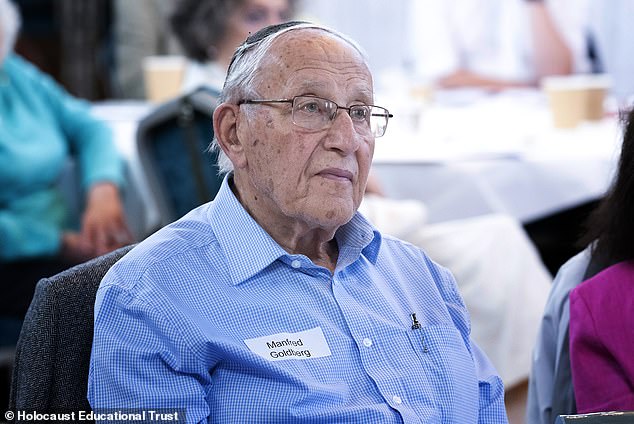
Manfred Goldberg (pictured), who survived eight months in the Stutthof camp as a slave worker, said Furchner’s suspended sentence was a ‘mistake’ and is the same sentence a shoplifter would receive
A special federal prosecutors’ office in Ludwigsburg tasked with investigating Nazi-era war crimes said last year that just three more cases are pending with prosecutors or courts in various parts of Germany.
Many Nazis who took part in the systematic killing of millions of people during the Holocaust are now either dead or near the end of their lives, raising questions over whether they are fit to stand trial.
Furchner’s upheld conviction is one of several in the last decade that builds on legal precedent from 2011 that established that helping a concentration camp function was enough to be an accessory to murder.
This comes after the oldest ever Nazi to be prosecuted for horrific crimes committed during Hitler’s regime died aged 102 in April 2023.
Josef Schuetz was found guilty of being an accessory to murder in at least 3,500 cases while he was working as a prison guard at the Sachsenhausen camp in Oranienburg, north of Berlin, between 1942 and 1945.
During his court case in 2022, prosecutors said Schuetz had aided and abetted the ‘execution by firing squad of Soviet prisoners of war in 1942’ and the murder of prisoners ‘using the poisonous gas Zyklon B’.
But the Lithuanian-born pensioner expressed no regret and pleaded innocence, saying he did ‘absolutely nothing’ and was working as a farm hand at the time.
After the war, Schuetz was transferred to a prison camp in Russia before returning to Germany, where he worked as a farmer and a locksmith.

Josef Schuetz (pictured in court in 2021) was found guilty of being an accessory to murder while working as a prison guard at the Sachsenhausen camp in Oranienburg, north of Berlin, between 1942 and 1945. He died yesterday age 102 in 2023, sources close to the case have said
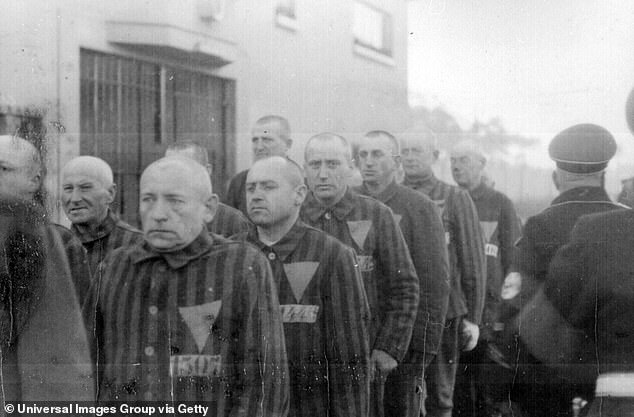
Schuetz said he did ‘absolutely nothing’ and was not aware of the gruesome crimes being carried out at the camp. Pictured: Prisoners in the concentration camp at Sachsenhausen in December 1938
During his trial, prosecutors told Neuruppin Regional Court, which was held in a prison sports hall in Brandenburg an der Havel, that Schueltz ‘knowingly and willingly’ participated in the murders of 3,518 prisoners at the camp and called for his imprisonment.
It always seemed unlikely that Schuetz, who was handed a five-year prison sentence in June, would be placed behind bars as he remained free while awaiting the outcome of an appeal.
More than 200,000 people, including Jews, Roma, regime opponents and gay people, were detained at the Sachsenhausen camp between 1936 and 1945.
The tens of thousands of inmates died from forced labour, murder, medical experiments, hunger and disease before the camp was liberated by Soviet troops, according to the Sachsenhausen Memorial and Museum.


